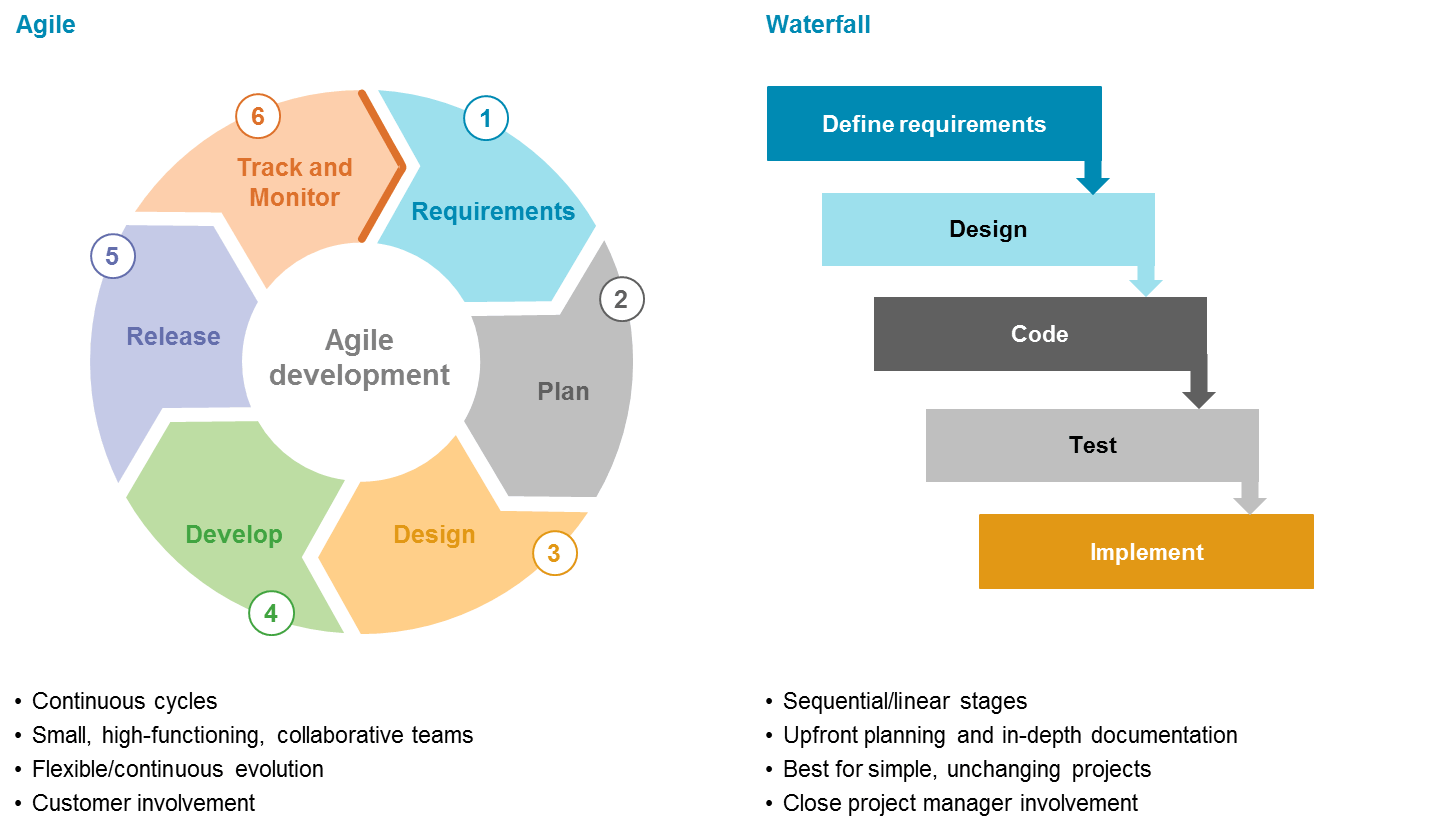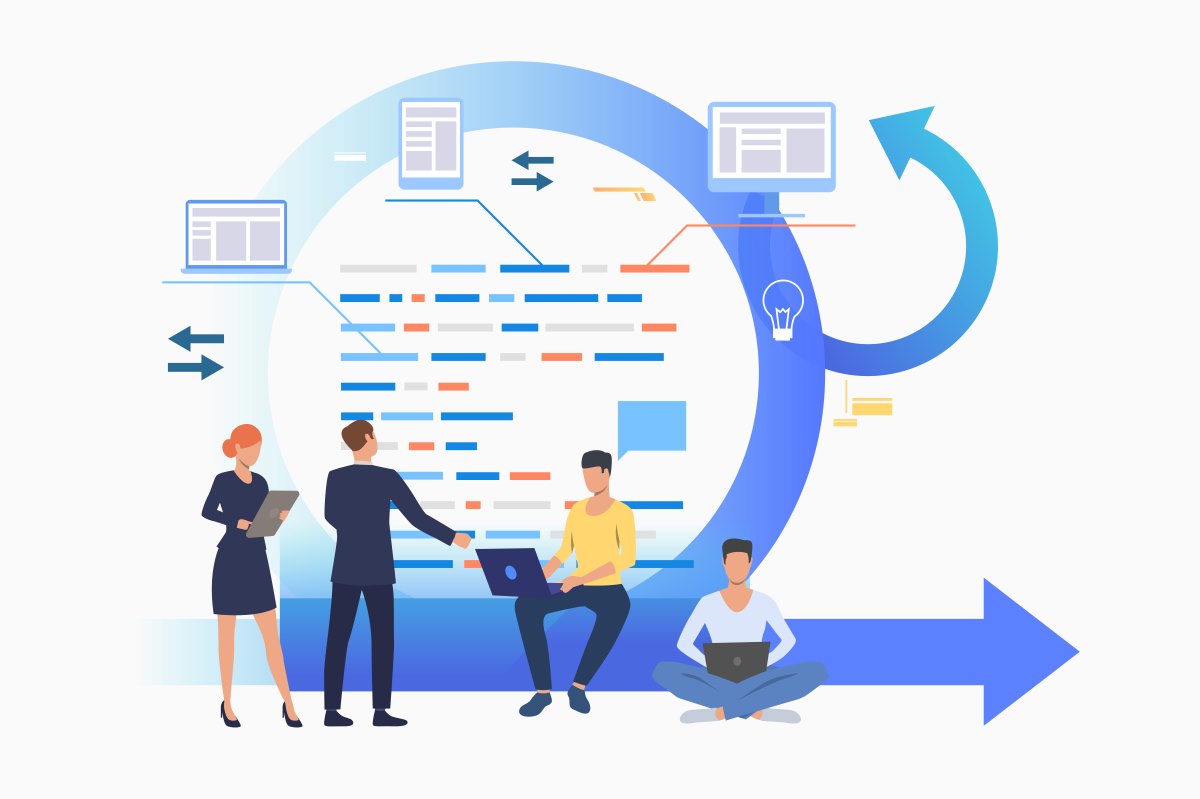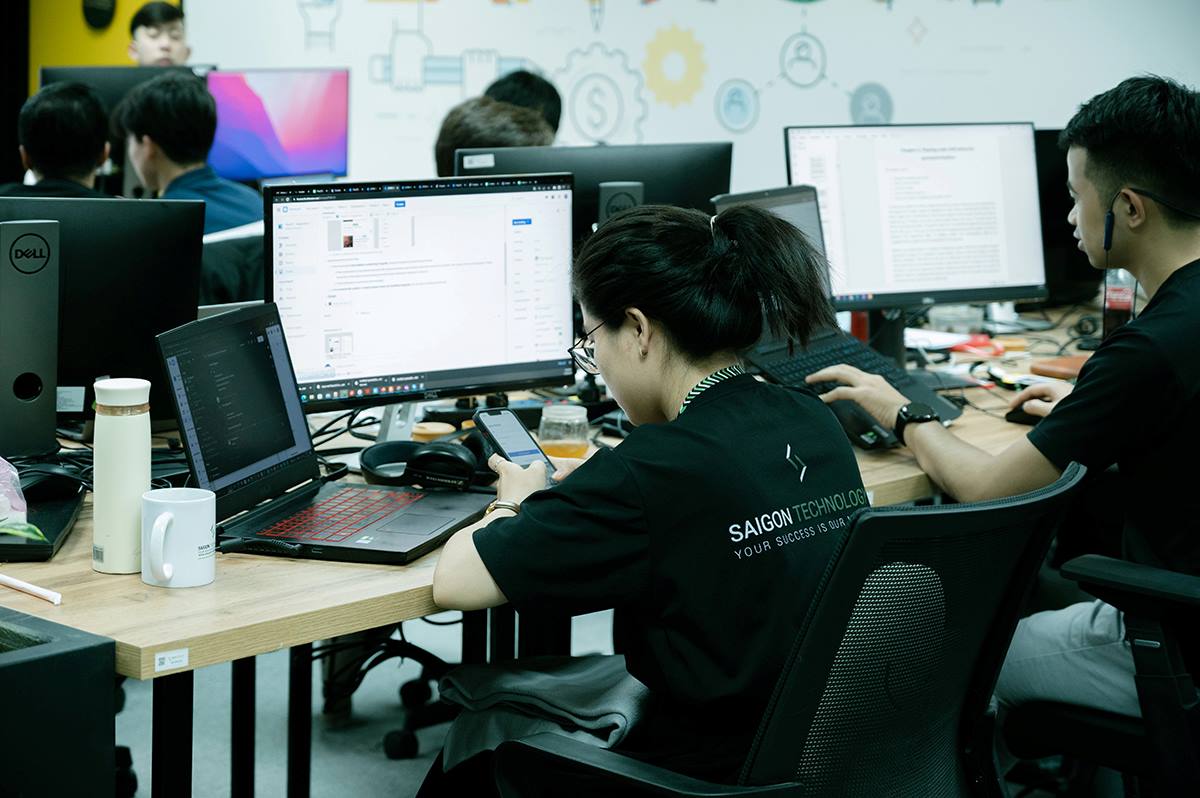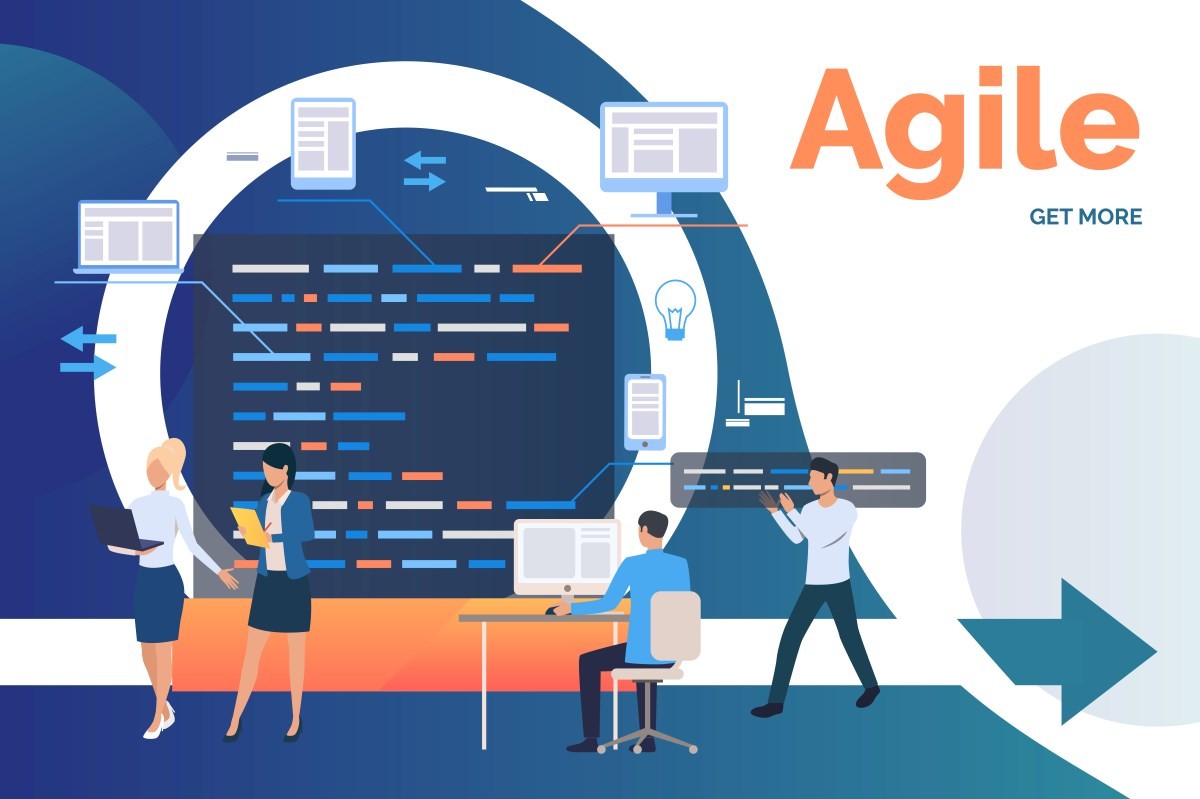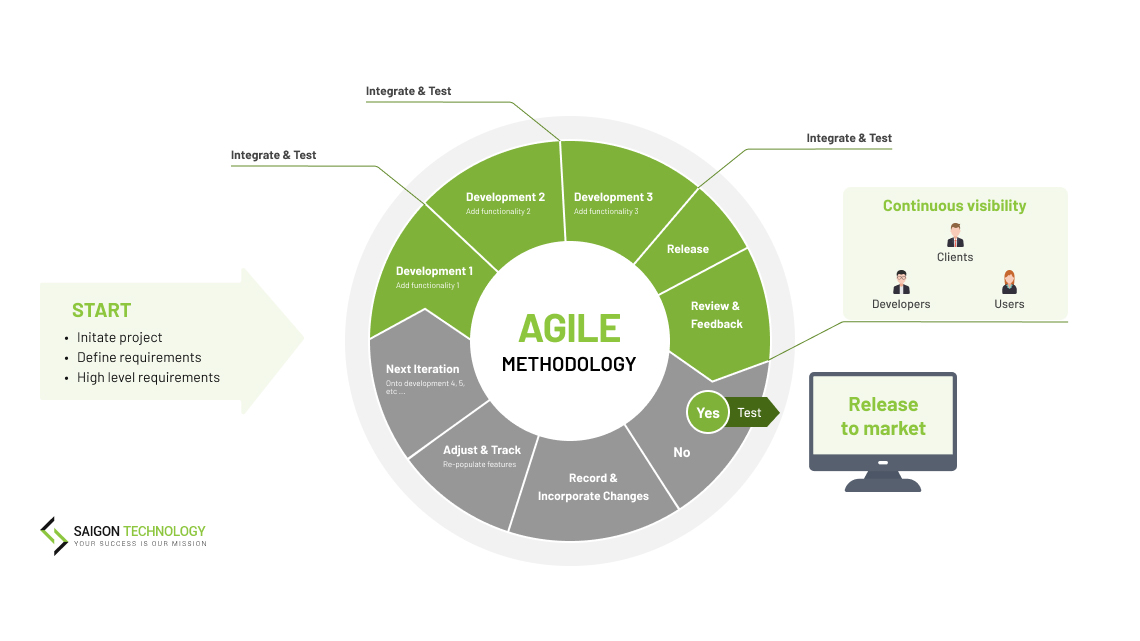The most critical decision before undertaking a software development project is deciding on the specific management methodology. However, it is not an easy decision to make due to heated debates about the two primary development methodologies available today: agile and waterfall. Simply put, the development methodology sets out how the software development work is planned and worked on for a successful project.
On one side, there is the traditional software development approach, the Waterfall, where the project is handled linearly with several events right from ideation to production. On the other side, you have the modern Agile approach that involves versatile, iterative, team-centered development. While both development methodologies strive to help in streamlining the process of managing software development tasks, they work in entirely different ways. Learn more about Agile and Waterfall here below, including the history, and the benefits and disadvantages of each approach.
History
The Waterfall approach was the primary or leading software development approach for the longest time ever since it was introduced in the 70s. At that time, project managers used Waterfall as a way of bringing a more organized structure to developing software.
Meanwhile, Agile was created decades later in 2001 as a way of addressing a few of the limitations associated with Waterfall. These limitations were primarily based on the fact that Waterfall placed too much emphasis on the documentation and planning stage, instead of software delivery. Moreover, it was also too hard to go back and make the necessary changes during development.
As the entire software industry continued to evolve, it was clear that Waterfall was no longer able to meet the needs and requirements of all businesses.
Let us look at both development methodologies in more detail.
The Waterfall Model
The Waterfall model is regarded as the traditional software development strategy where the project is divided into unique stages or events that have to be completed sequentially. With this non-iterative design process, the software isn’t ready for release until after it has linearly passed through all the stages.
As the term ‘waterfall’ implies, the developers must work on one stage at a time before moving to the following phase. In a Waterfall implementation, you are prohibited from returning to the previous step as you are only supposed to travel downstream. Hence, the only way to get back to the early stages is to finish the entire development cycle first.
Stages of the Waterfall Model
Each organization will typically have a unique set of stages for the Waterfall model, but generally, the approach may look like this:
• Conception: The conception is the initial stage where developers decide on the idea and what they are looking to create. It will evolve into cost/benefits analysis and end with an estimate of the entire project.
• Initiation: This initiation phase aims to gather and document what the project will need, including the software and system requirements. That is when the team members are hired as you expand on the range of the task with purpose, deliverables, and objectives.
• Analysis: The next stage involves conducting feasibility analysis tests to create more detailed requirement specification documentation.
• Design: In the design phase, the designers develop storyboards, mockups, and wireframes to help them get a visual representation of the project. They review and evaluate the requirements, set team goals, develop an action plan, and the outcome is clear software architecture.
• Coding or Construction: The core software building work begins here. This phase involves the coding work of every individual part of the software. The developers start creating the app following the designs and processes that they agreed upon in the earlier stage.
• Testing: The built software undergoes extensive testing to eliminate any bugs. This stage typically involves additional coding for resolving any problems within the software’s source code. It will also include UAT testing where end users vet the app before the launch.
• Implementation: The final product is finally launched to the market for use by consumers.
• Maintenance: No app is perfect, and users will probably encounter bugs as they use the new software. The developers must create a support structure in place to resolve any arising problems with patches and bug-fixes. The patches can even be used for adding new functionalities to stay competitive.
Now, let us consider some of the benefits and demerits of using this software development approach.
Benefits of Waterfall
• More disciplined design: Since every phase has clear start points and reviews at the end, the developers must complete all the tasks in every stage so that the project can proceed forward.
• Clearly defined deadlines: The static nature of the Waterfall model and the predictable workflows makes it easier to set clearly defined deadlines, estimate costs and create timelines.
• Well-documented approach: Many organizations prefer using Waterfall since it requires extensive documentation for every development phase. That makes it easy to evaluate the logic behind past projects as well as laying the foundation for future software development projects.
• Clear communication: The well-documented nature and predictable development stages allow developers to give progress reports to stakeholders, clients, or upper management.
• Easier learning curve: Since the Waterfall model was the conventional approach for managing projects across most industries; most teams will not need prior training or knowledge to start a project using this strategy. Furthermore, since customers and developers agree on the project details early on, the designing and planning are much more straightforward.
Disadvantages of Waterfall
• Gathering project requirements too early can be very risky: The reality is that clients and other stakeholders typically are not sure about what they want until they have spent time with a prototype. Since the Waterfall methodology involves handling all the requirements upfront, there is a considerable risk of getting the wrong data that will cause lots of headaches further down the development stages.
• Making changes is very expensive: The primary disadvantage to the rigidity of the Waterfall method is the severely hampered capability of handling change. The testing is done too late into the software’s life cycle, which means that it will likely be late to make changes and pivot if users do not like the app you are building.
• Prolonged project delivery times: There are several developmental stages that developers must complete before they can start coding. That means customers and stakeholders will not see a prototype or working outcome until late within the project’s life cycle.
• The tendency of neglecting to test: It is quite risky to conduct all the extensive testing once the project is almost done, due to the temptation or rushing through it, especially when working with tight deadlines. The reality is that poorly tested products may result in a highly disastrous launch and the developers will also lose valuable data and feedback that they could have used in the earlier stages of the project.
The Agile Model
Instead of using one long and sequential process for software development, Agile offers a more flexible, iterative approach that features shorter cycles. With Agile, the focus is on lean development and creating MVPs or minimum viable products over specific durations, while delivering improvements with every new software iteration.
Even though you will still find similar software development, like planning, designing and coding, across both methodologies these steps occur incrementally in Agile, rather than being performed at once in Waterfall. Teamwork, continuous improvement, constant feedback and the capacity of adapting to changing project requirements are all critical in Agile methodologies. It is worth to note that Agile refers to all methods that follow the ideologies set out in the Agile Manifesto that was created in 2001.
Common Implementations of the Agile Model
Scrum
A favorite way of doing things in line with the Agile approach is to use the Scrum project management style. Scrum defines clear, uniform responsibilities, roles and meetings to provide the much-needed stability a dynamic software development methodology. The scrum approach features fast-paced, efficient Sprints where MVPs are delivered after every week or two weeks.
Extreme Programming
XP focuses on delivering high-quality software and being more responsive to the ever-changing client requirements. It includes pair programming, unit tests, and extensive reviews for the code.
Kanban
Kanban is a Japanese word for “card” or “visual sign,” and this strategy allows more traditional companies to get a visual representation of their workflow. That visualization helps to improve the workflow and limit work in progress, and also improve the workflow for backlogged processes.
Core Agile Development Process Principles
There are a few core principles across all the various Agile development processes mentioned above, and they include the following:
- High Adaptability: The Agile methodology highlights the benefits of having the space to change requirements, architecture, deliverables, and design during project development. It is inherently a more flexible software development strategy as compared to the previous Waterfall mode.
- Customer Involvement: Due to the frequent changes in the design and deliverables, Agile requires that the developers and customers collaborate closely. That means ensuring high customer satisfaction with the MVPs and getting continuous feedback as well.
- Lean Software Development: Agile development aims to make the final product as straightforward as possible. That means following the easiest steps to achieve high-quality results. That way the developers reduced the complexity and bloat that can significantly affect performance. It involves finding any elements that add value and removing them from the development process.
- Teamwork: Agile values the advantages of working in teams. Teams must work together and continually evaluate how they can improve and become more efficient. XP insists on pairs of developers working together for its projects.
- Sustainability: Rather than pushing developers with faster deadlines and receiving unfinished projects, Agile development emphasizes on creating a more sustainable development pace.
- Testing: Unlike the Waterfall model that has a special testing stage, Agile involves testing at every project stage. The short sprints in Agile include continuous testing, and the developers must provide continual feedback and the quality of the project regularly.
Benefits of Agile
• Flexibility: The short and timed development cycles give the software development project more flexibility to adapt to customer changes whenever applicable.
• Instant feedback: The immediate feedback during development ensures that you create products that users want.
• Test-driven software development: The benefit of breaking the project down into iterative chunks is the fact that developers have enough space and time to create more extensive unit tests to measure specific features in the minimum viable product.
• Faster and better quality delivery: The tests at the end of every iteration means that you will get greater quality releases with fewer bugs. That is a robust foundation that contributes to faster and greater quality software releases across successive iterations.
• Focus on teamwork: The agile methodology involves frequent communications across teams, pair programming and thus, it draws from the strength of all team members.
Disadvantages of Agile
• Vague timelines: The flexibility of Agile development may also leave some space for procrastination. Moreover, since the tasks will often be generated and reprioritized at every app iteration, the result is that the overall delivery timeline will be pushed further ahead into the future.
• Requires high commitment: Agile only works efficiently when every team member is fully committed to working on the project. That is because it involves team collaboration and daily meetings that can all consume lots of time as compared to the Waterfall strategy.
• The potential for increased costs: Even though Agile springs allow for better planning, it is likely that specific deliverables won’t be delivered on time. Creating the required extra sprints may, therefore, mean greater project costs for the client.
• Communication: As Agile requires lots greater levels of collaboration, it means that development teams and clients will need to be in constant contact, which can be challenging for remote work.
How to Choose Between Agile and Waterfall
The waterfall model may be the best option where there is limited access to customers to provide continuous user feedback. Furthermore, it will suit projects that have a distributed team and a fixed budget and project scope.
Meanwhile, agile is suitable for bigger and more complicated projects that have access to customers for feedback. Due to its inbuilt flexibility, the agile strategy is ideal for those projects that have continually changing requirements.
Conclusion
As shown above, both Waterfall and Agile have their distinctive strengths and weaknesses. Ultimately, choosing between these methodologies comes down to selecting either stability or flexibility. Regardless of which is the more conventional or, the more popular, a company’s decision between which development model to use must be ultimately based on individual goals, clients, teams and project needs.
At Saigon Technology, we pride ourselves on offering custom software development services, employing both Agile and Waterfall methodologies to meet diverse client needs. Our team of experts is dedicated to delivering efficient, high-quality technology solutions that support sustainable business growth.

